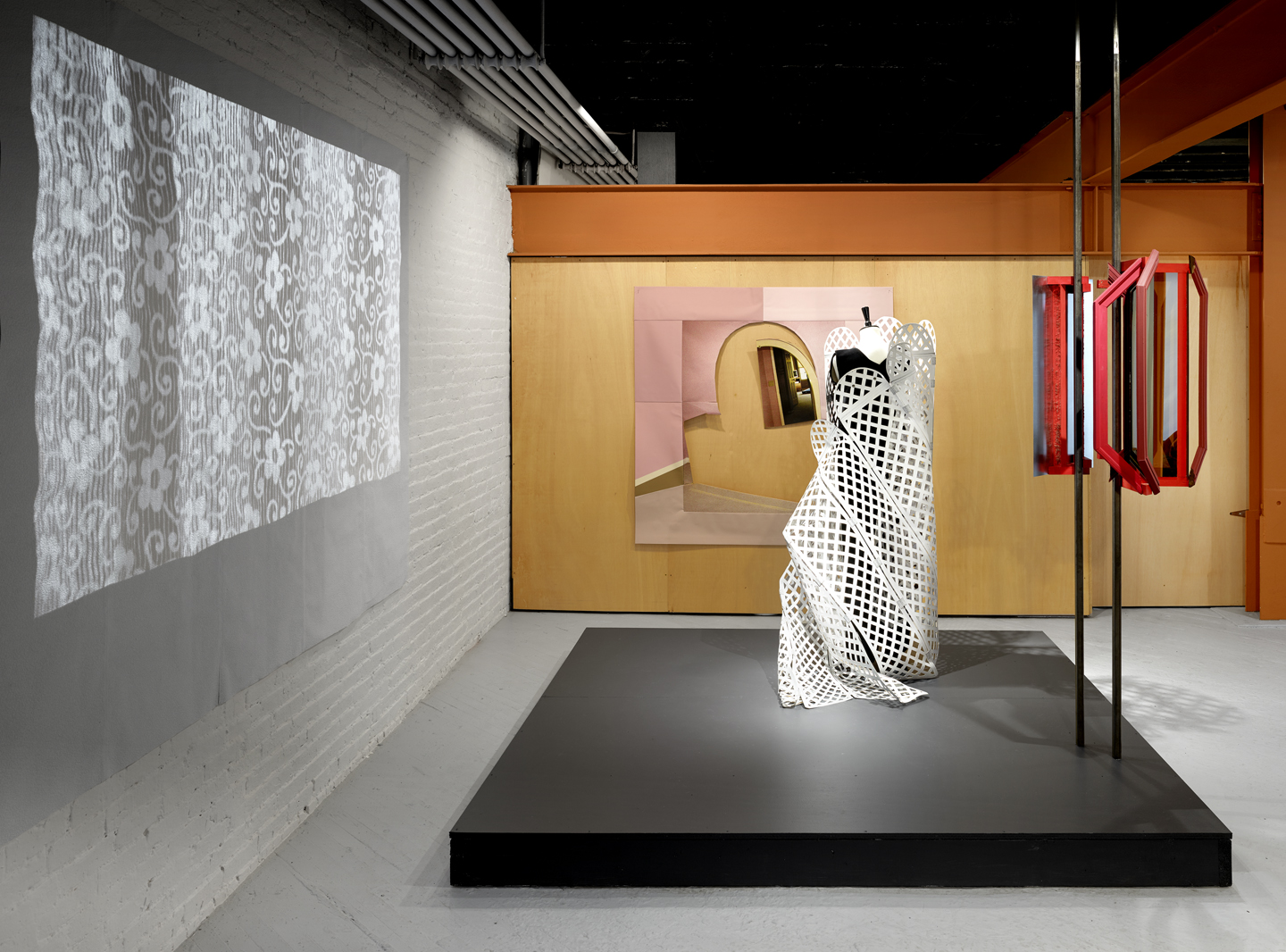HEATHER ROWE/MEREDYTH SPARKS: SHE'S NOT HERE.
DEC 2, 2017- JANUARY 26, 2018
VERY is pleased to present She’s not here., an exhibition by New York-based artists Heather Rowe and Meredyth Sparks. Rowe’s work exists on the edge of sculpture, architecture, and installation, structuring spaces with repeating geometries that waver between sharpness and fragility. For Sparks, the extraction of found imagery from its source and its subsequent reconstruction negotiates the space between the material and the abstract and that which is perceived and which is implied.
Rowe’s work in this exhibition investigates the haunting of a woman in the 1970s by an invisible and often times violent presence. In 1974 a group of research associates from UCLA’s former parapsychology laboratory spent several nights at the woman’s home in an attempt to capture the assaulting form. During the investigation the team took two photographic images that reveal arcs of light in the woman’s living room. Based on the unusual properties of the light, the photographs could be viewed as evidence that the haunting was real. In her video projection, “The Entity (Recreation of Documented Phenomena)” Rowe examines the scenario depicted in the photographs by staging a domestic set rigged with lighting effects. Rowe does not attempt to conceal the mechanisms behind the special effects, exploring the (im)possibility of the apparition’s existence.
Rowe’s sculpture,“The Entity (Red Mirror)” takes the 1983 film, The Entity based on the woman’s life in the 1970s investigation as its’ starting point. The sculpture is constructed from a red mirror used as a prop in the video and hovers at mid-room height attached to a metal pole. Mirrored glass forms a corner and the reflections become fractured as the frames are cut apart and repeated. The effect and structure of this work becomes a stand in for the struggle of the woman in the film.
Sparks’ “Figure Five. The Baroness’ Screen,” is one in a series of sculptural works that enacts the play between the figure and the vacant interiors of her sewn, shaped and collaged pieces. Referencing the Baroness Elsa von Freytag-Loringhoven, an often overlooked progenitor of Dadaism, the sculpture takes the form of a black floor-length dress exhibited on a mannequin that one might see in a shop window. The dress is embellished with the image of an accordion lattice screen that has been printed on canvas, cut out, and reassembled. The screen encircles the figure, at times threatening to engulf it while other times loosely draping it as if an adornment. In effect, the dressing screen merges with the figure behind it, constricting and expanding the space it occupies.
In “Extraction (Mauve Grid/ Dresser: Redux),” Sparks takes a found image of a dresser with a mirror and cuts out the object, revealing the existing wooden wall of the gallery. This altered digital print has been expanded from its original frame through a process Sparks considers a form of “painting,” though in actuality the work is printed from the digital file after she makes the changes on screen. Almost unnoticeable at first, these manipulated areas of color act at once as illusion and abstraction— realistic extensions of the image and flat geometric shapes.
For She’s Not Here., Rowe and Sparks have conjoined their distinct formal languages by employing a raised platform that frames the sculptures and mimics the gallery’s extant seating area. The exhibition design emphasizes the idea of a window display, nodding to an invisible “glass wall,” yet viewers are invited to walk on the platform and among the pieces. Both artist’s works engage with and challenge our notions of absence and presence, female representation and an implied danger or personal threat.




